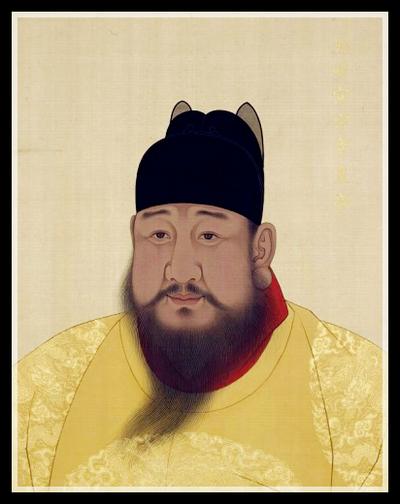
Xuande Emperor
| Name | Xuande Emperor |
| Title | emperor of the Ming Dynasty (1399-1435) |
| Gender | Male |
| Birthday | 1399-03-16 |
| nationality | Ming dynasty |
| Source | https://www.wikidata.org/wiki/Q9977 |
| pptrace | View Family Tree |
| LastUpdate | 2025-10-31T07:17:14.507Z |
Introduction
Zhu Zhanji (16 March 1399 – 31 January 1435), known posthumously as Emperor Xuanzong of Ming, was the fifth emperor of the Ming dynasty, reigning from 1425 until his death in 1435. He was born in Beijing as the eldest son of Zhu Gaochi, who later became the Hongxi Emperor, and Lady Zhang. His father was the eldest son of Zhu Di (the Yongle Emperor), making Zhu Zhanji a grandson of Zhu Di.
During his youth, Zhu Zhanji received training in military skills and Confucian literature from Hanlin academicians. He demonstrated notable talent in both areas and was physically active, often participating in hunting and military exercises. In 1411, he was appointed Imperial Grandson-heir, a position reflecting his status as heir apparent. His education was overseen by Grand Secretary Hu Guang, and he actively studied military campaigns. He maintained close relations with the Yongle Emperor, who allowed him to accompany him on hunts and military campaigns, including an expedition against the Mongols in 1414.
Following the death of the Yongle Emperor in 1424, Zhu Zhanji's father ascended the throne as the Hongxi Emperor. Zhu Zhanji was named heir and was sent to Nanjing to prepare for the relocation of the imperial capital, which was planned to move from Beijing to Nanjing. However, the Hongxi Emperor's health declined rapidly, and he died before the move could be completed. Zhu Zhanji ascended to the throne on 27 June 1425, adopting the era name Xuande.
His accession followed a brief period of internal political tension, notably with his uncle Zhu Gaoxu, who had previously been favored by the Yongle Emperor for his military prowess. Zhu Gaoxu rebelled against Zhu Zhanji’s accession but was defeated in 1426 after a military campaign led by the young emperor himself, who personally commanded forces against his uncle. Zhu Gaoxu was captured, demoted, and ultimately executed, along with many of his followers.
Emperor Xuanzong's reign was marked by relative peace, stability, and cultural flourishing. His foreign policy maintained stable relationships with neighboring states. A significant event in his foreign policy was the authorization of Zheng He's final Indian Ocean voyages (1431–1433), which aimed to project imperial power and establish tributary relations. Relations with Southeast Asian nations, Korea, and Japan were generally peaceful, with trade and diplomatic exchanges maintained. Notably, the emperor declined to support further maritime expeditions after Zheng He's voyages, influenced by Confucian opposition and internal debates.
Domestically, Emperor Xuanzong sought administrative reforms. He strengthened the power of grand secretaries, who advised him on governance, and increased the influence of eunuchs in court affairs, particularly in confidential communications. He implemented reforms in the Censorate, local administration, and military organization, including the appointment of regional grand coordinators to oversee civil, military, and surveillance offices. Despite efforts to reform and discipline the military, issues persisted, such as corruption among officers, weak leadership, and declining army effectiveness, which would later contribute to significant military defeats.
Financially, his government attempted to promote paper currency, reduce taxes, and improve agricultural stability. However, these efforts faced challenges, leading to the eventual decline of paper money and increased reliance on silver for large transactions. Tax reforms in Jiangnan aimed to reduce burdens on peasants, including measures such as consolidating rice storage, improving tax collection, and adjusting tax payment methods. These policies aimed to sustain the grain supply essential for Beijing’s stability.
During his reign, the Ming external relations included managing the conflict in Jiaozhi (Vietnam), which resulted in the withdrawal of Ming troops and recognition of Lê Lợi’s independence in 1431. His administration dealt cautiously with the Mongol border regions, maintaining relative calm and engaging in trade. Diplomatic relations with Korea were maintained through regular exchanges, while relations with Japan involved trade and the exchange of gifts, despite initial resistance from Japanese authorities.
The emperor was known for his artistic pursuits; he was a talented calligrapher and painter, producing landscapes, animals, and floral works using ink. His artistic interests influenced court arts, and he actively supported artists and craftsmanship, contributing to the cultural prosperity of his era.
Emperor Xuanzong died after falling ill during a border tour in early 1435. He was posthumously named Emperor Zhang and given the temple name Xuanzong. His succession was carried out by his young son, Zhu Qizhen (Emperor Yingzong), who was only eight years old at accession. During the early regency, the influential Grand Empress Dowager Zhang and the grand secretaries governed in his name. His reign is often regarded as a high point of stability and cultural achievement in Ming history, representing the last period of active imperial governance by a Ming ruler until the late 15th century.
Family Tree
Tap to expand more relatives